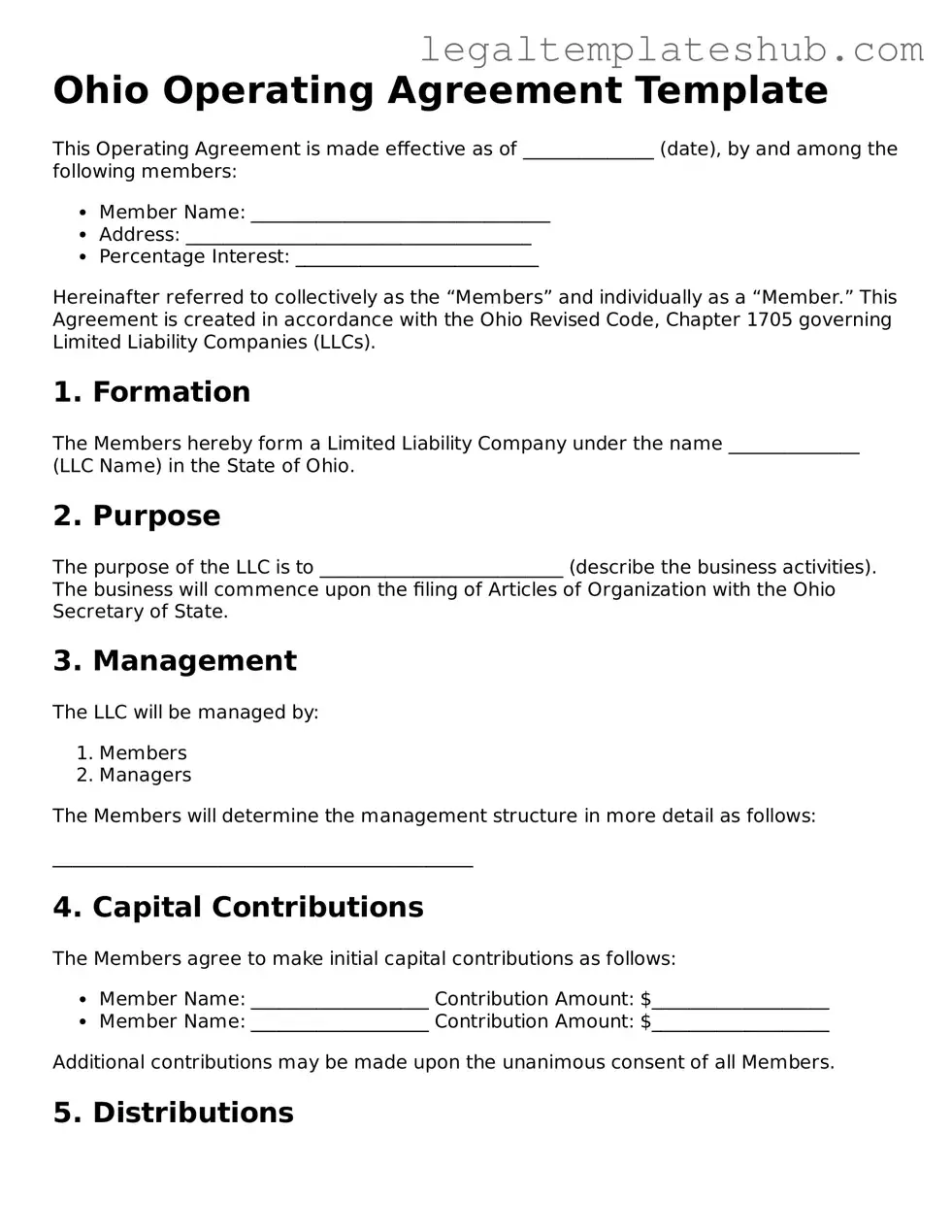Printable Operating Agreement Document for Ohio
The Ohio Operating Agreement form is a crucial document for Limited Liability Companies (LLCs) in Ohio, outlining the management structure and operational procedures of the business. This agreement not only clarifies the roles and responsibilities of members but also helps prevent disputes by establishing clear guidelines. To ensure your LLC operates smoothly, consider filling out the form by clicking the button below.
Access Editor
